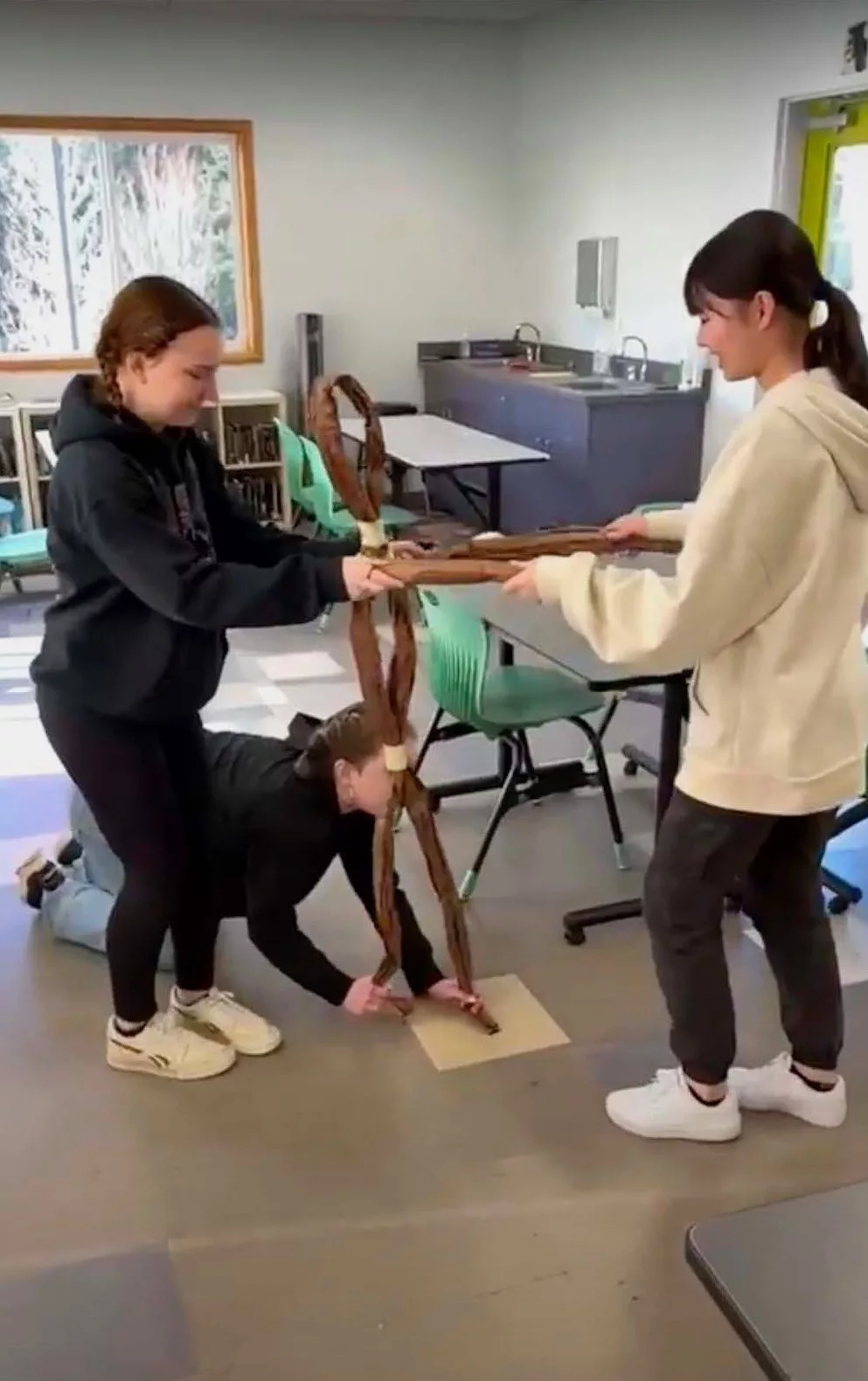Theatre students’ research leads to building and creating Bunraku-like puppets.

“The I in IB truly does stand for International. IB schools are known for their focus on producing global citizens who are educated about the world.”1
This semester the 10th-grade theatre students began their journey into the world of theatre by creating a timeline of different world theatre traditions. By completing a “quick fire investigation” on the origins of over thirty traditions students were introduced to the history of theatre from a global perspective and not just through the lens of Western European theatre traditions. Next, they were challenged with the concept of why humans make art and held a debate on five different academically recognized theories on those origins. As a result, students began to know and understand the context and conditions from which drama emerged in different cultures.
With their curiosity piqued it was time to truly start exploring!
The students were put into small groups to begin working through an investigation and exploration project of the World Theatre Tradition - Bunraku Puppetry which is a Japanese traditional puppet theatre in which half-life-size dolls act out a chanted dramatic narrative, called jōruri, to the accompaniment of a small samisen (three-stringed Japanese lute)2.
The objectives for this work are for students to: experience and learn the practical skills of research (which can be used in any subject moving forward,) learn through the hands-on exploration of how to perform the basics of the conventions of a world theatre tradition (or its similar cousin), and improvise scenarios and create collaborative drama.
Students working in small groups first became familiar with the tradition of Bunraku puppetry through watching a video of the tradition being performed. Then students had to write
Three Academic Research Questions covering these topics and ideas:
- Context – when, where, and why did the tradition begin?
- Is the tradition still practiced today?
- What are the performance conventions of the tradition?
Three Practical Research Questions covering how to perform the tradition:
- How does one perform the tradition?
- What are the physical (movement, vocal, gestures) requirements?
- How does one manipulate a large puppet?
They answered the three academic questions using academically recognized sources.
The next step was the PRACTICAL RESEARCH step where students watched the following videos:

Now it was time for them to put their practical research to work and begin exploring the processes involved in building Bunraku-like puppets.
They built and created their own puppets.
They learned how to bring the puppet to life.


And finally, they improvised scenarios and created collaborative drama - and made a moment of theatre.


The students exhibited the IB Learner Profile Traits Attributes of being
- Knowledgeable
- Thinkers
- Communicators
- Open-minded
- Caring
- Risk-takers
- Reflective
As an IB teacher, I work to ensure students step outside of the standard subject material. My goal is to model the IB Profile Attributes by going beyond basic curricula to instill caring and curiosity in my students.
This project was originally created by Jane Fisher, my professional peer, who is the Former Head of Performing Arts at British School Jakarta and is now teaching IB Theatre in Cape Town, South Africa.
Photos in this post were shared with the students' permission.
1 - Kathy Deady - TeachAway